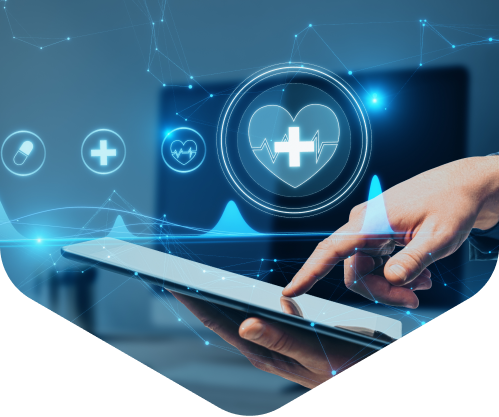The Role of Information Technology in Healthcare
The role of IT in healthcare impacts almost every area of the industry.
Most often, Health IT refers to the technology and infrastructure used to record, analyze, and share patient data.
Even that encompasses several technologies, from vast health record systems and patient portals to personal health devices and apps.
The shared goal of any information technology in healthcare is improving patient health.
Tactically, this means providing IT solutions that result in better care for patients, higher patient engagement, and greater patient education about their health conditions.
Health IT Initiatives
In the United States, the Office of the National Coordinator for Health Information Technology (ONC) has targeted 10 Health IT initiatives:
- Behavioral Health: Using Health IT to improve the continuity of care services and support interoperability among healthcare systems.
- Blue Button: Certifying healthcare websites’ functionality for patients to download their health records. Qualifying sites display the Blue Button symbol.
- Emergency Medical Services and Emergency Preparedness: Giving EMS providers the ability to enter data into an electronic patient care record (ePCR), the EMS equivalent to an electronic health record (EHR).
- FHA CONNECT: CONNECT is an open-source, eHealth Exchange-certified gateway that enables the secure and effective exchange of healthcare information.
- Long-Term and Post-Acute Care: Health IT can support advancements in care coordination and sharing of essential health information as individuals transition across care settings.
- Patient-Generated Health Data: Patient-generated health data (PGHD) is gathered from patients or caregivers and shared with physicians to help address a health concern.
- Prescription Drug Monitoring Programs: Prescription drug monitoring programs (PDMPs) are state-run databases that make physicians and other healthcare providers aware of a patient’s history with controlled substance prescriptions.
- Public Health: Health IT can be used to prevent disease, diagnose health conditions, and promote health for an entire population of people rather than one person at a time. It proved essential in tracking the spread of COVID-19.
- Rural Health: Healthcare in rural communities presents unique challenges of distance, isolation, and limited resources that complicates rural healthcare delivery. Health IT can help ease these problems.
- Telemedicine: Telemedicine proved its worth during the COVID-19 pandemic by allowing patients to seek non-emergency care while doctor’s offices were closed. The ONC includes mobile health (mHealth) in this category.
These initiatives show the government’s dedication to improving care quality, expanding access to healthcare, and reducing costs through Health IT.
The Benefits of Health IT
The technology used by modern healthcare providers allows them to analyze patient information like never before. IT in healthcare aids in improving the quality of healthcare delivery, increasing patient safety, decreasing medical errors, and strengthening the engagement between patients and providers.
The data gathered by Health IT solutions gives greater public health insights to government health agencies. This helps improve planning and implementing policies for treating and preventing the spread of diseases.
Without immediate access to a patient’s medical records, physicians are forced to depend on the patient’s memory or the knowledge of a family member, neither of which may be accurate. Interoperable health records systems provide physicians with accurate patient records on demand, allowing them to better understand a patient’s medical history. With this knowledge, healthcare providers can more accurately treat patients and avoid prescribing medications that may negatively interact with medications the patient is currently taking.
For patients with chronic health conditions like diabetes, cancer, and heart disease, Health IT delivers an improved level of care. Many providers have introduced chronic disease management (CDM) programs. By more effectively and comprehensively managing the health of patients with chronic conditions, these programs reduce the number of preventable hospitalizations and adverse events. Information technology in healthcare is the backbone of such programs.
Health IT empowers patients to take greater control over their health data by providing access via patient portals. Patient portals enable individuals to view medical test results, download their patient data, communicate with their doctor, schedule visits, and more—all via a website application or mobile app.
Opportunities for Growth
The delivery of healthcare is changing worldwide, and Health IT is the main driver of that change. Backed by government initiatives, healthcare organizations are constantly looking for ways to improve the quality of the care they deliver.
The importance of information technology in healthcare will only continue to grow. Fueled by new technologies, increased efficiencies, and greater interoperability, the healthcare industry will provide constant opportunities for greater innovation.
